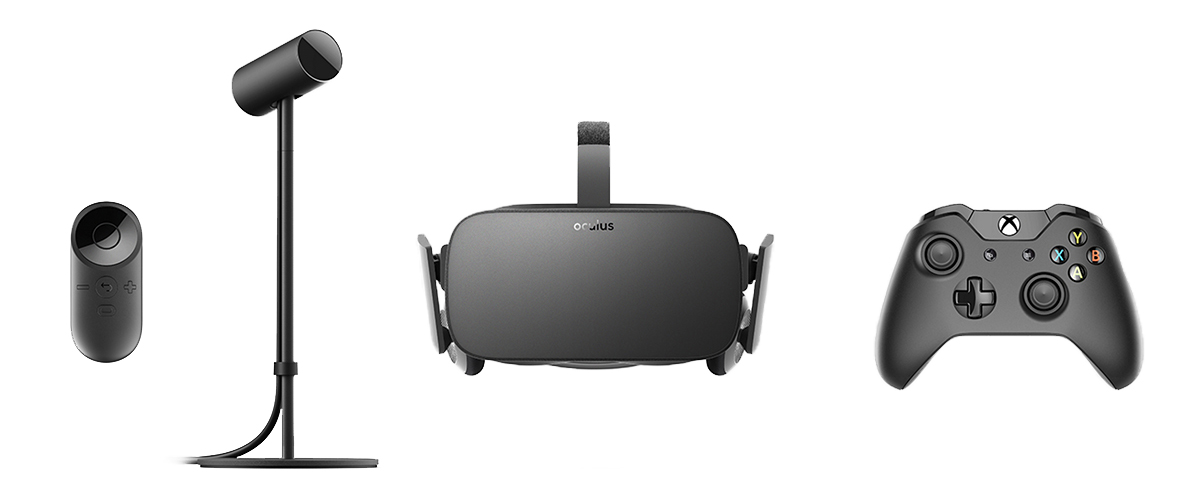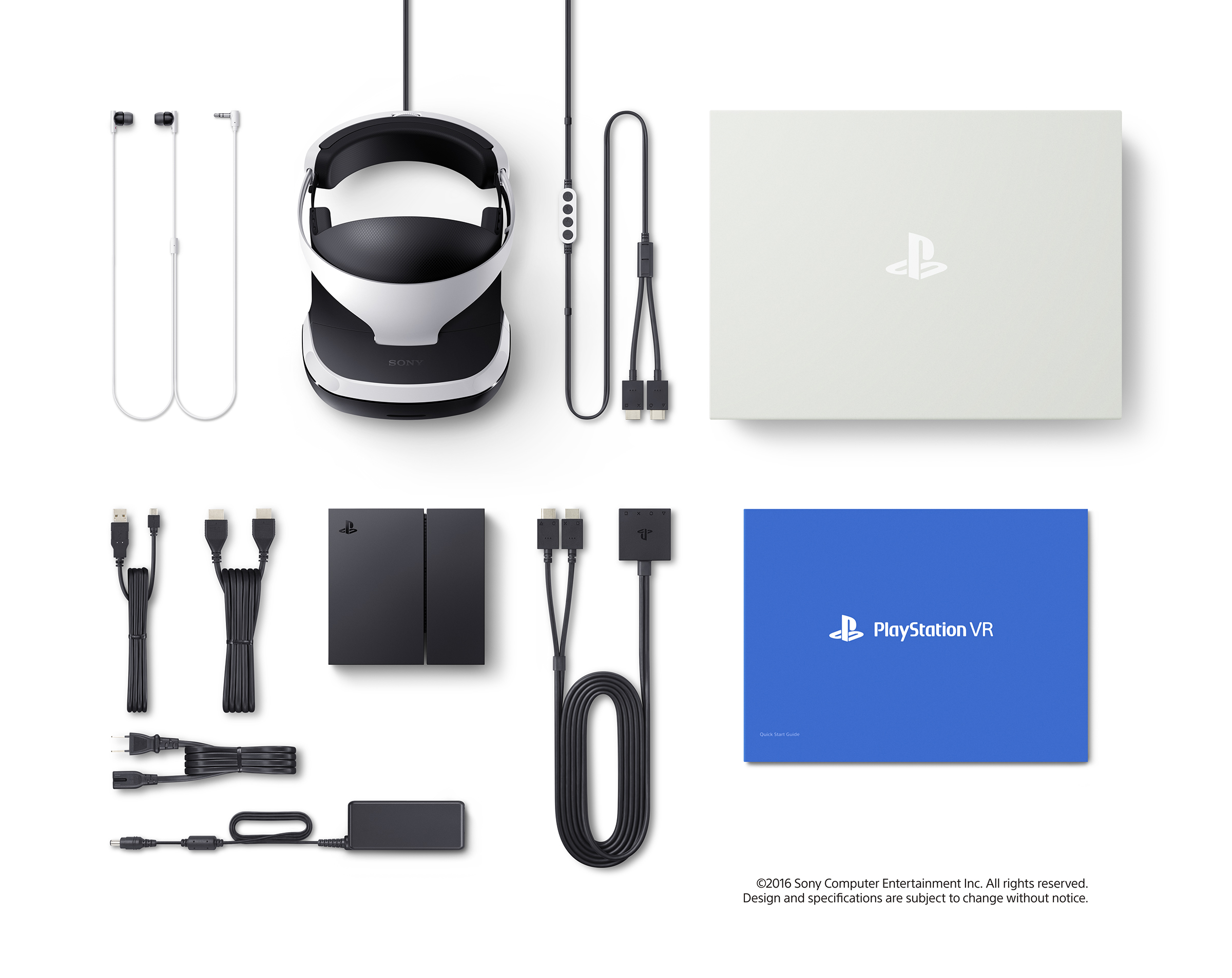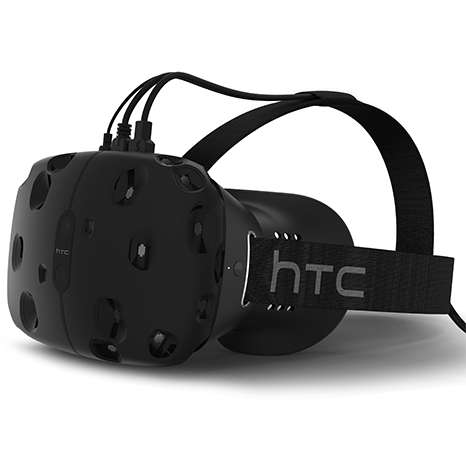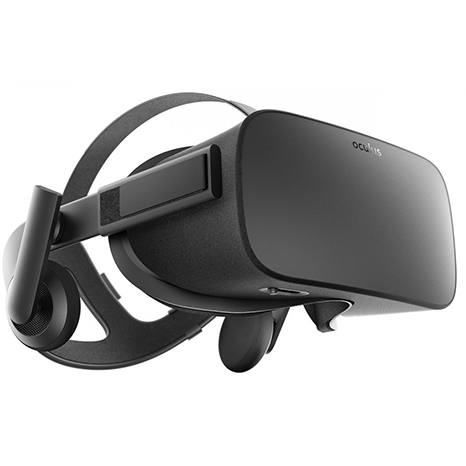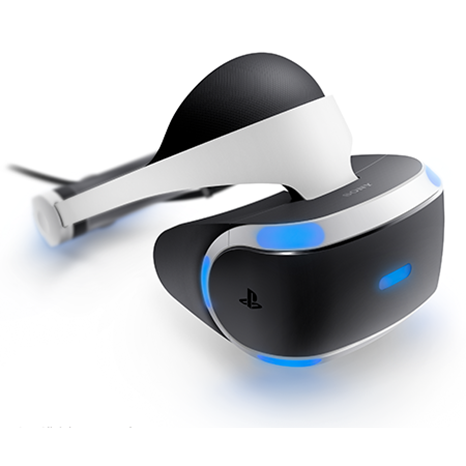Oculus Rift Vs. HTC Vive Vs. PlayStation VR
The Oculus Rift and HTC's Vive are now available and later this year, Sony's Playstation VR is coming out. This guide offers a comparison between the three and will help you device which VR system is right for you.
What's Included In The Box And Setup
Why you can trust Tom's Hardware
Let’s first take a look at what you get in each box. For the sake of a fairness, we're using the PlayStation VR bundle that includes the camera (a necessary component) and the optional Move controllers. Although the Rift does not include any motion controls in the box, by the time PSVR ships, the Oculus Touch controllers should be available and there will likely be a bundle that includes the Rift and Touch in one box.
| Header Cell - Column 0 | HTC Vive | Oculus Rift | PlayStation VRBundle |
|---|---|---|---|
| Hardware | Vive HMD with integrated camera and micBase stations for tracking (2)Base station mounting kits (2)Link box (cable breakout box with optional Mini DisplayPort out, Bluetooth wireless connection to base stations and cell phone)In-ear stereo headphones with 30cm cord | Rift HMD with integrated supra-aural headphones (removable) and micConstellation tracking camera sensor with standBluetooth wireless media remote | PlayStation VR HMDPlayStation camera for trackingPlayStation VR processing unit (cable breakout box and splitter to send undistorted version of VR content to TV)In-ear stereo headphones |
| Power | 3m base station power adapters (2)1.2m link box power adapter | Row 1 - Cell 2 | PlayStation VR Processing Unit power adapter |
| Cables | 5m HMD 3-in-1 cable (HDMI 1.4/USB 2.0/power, attached)~0.5m HMD to headphone audio pass-through cable (attached)1m HDMI 1.4 cable (link box to PC)1m USB 2.0 cable (link box to PC)15m optional base station sync cable | 4m HMD 2-in-1 cable (HDMI 1.3/USB 3.0, attached)2.5m tracking camera sensor cable (USB 3.0) | 1.5m HMD 2-in-1 cable with inline remote (HDMI/USB 2.0, attached)~2.5m HMD 2-in-1 cable to processing unit (HDMI/USB 2.0)~2m processing unit to PlayStation 4 HDMI cable~2m processing unit to PlayStation 4 micro-USB to USB cable |
| Controls | Vive wireless controllers with lanyard (2)For charging:Controller power adapters (2)Controller micro-USB cables (2) | Xbox One wireless controllerWireless adapter for WindowsAA batteries (2)USB extender cable for wireless adapter | PlayStation Move motion controllers (2)For charging:PlayStation Move controller mini USB to USB cables (2) |
| Miscellaneous | Cleaning clothAdditional interchangeable foam face cushion (narrow)Link box mounting pad | Cleaning clothRift carrying caseHeadphone removal tool | Row 4 - Cell 3 |
| Software | Fantastic Contraption gameJob Simulator gameThe Lab game (mini-game collection)Tilt Brush application | Lucky’s Tale gameFarlands game | PlayStation VR demo disc (demos of select launch titles)PlayStation VR Worlds game(mini-game collection) |
HTC Vive Box Contents
Out of the three systems, HTC's Vive clearly comes with the most components. As the only VR system capable of room-scale VR out of the box, the Vive naturally needs more hardware, and you get a lot for your money. HTC doesn't leave out anything; it includes all of the cables you need, plus chargers for the controllers and an optional wired sync cable for the base stations (by default they sync wirelessly). HTC also bundles useful extras like a second (narrower) foam gasket for users with different facial structures.
The Vive includes the most generous selection of free software, with two full games, a mini-game collection and a VR application (Tilt Brush, a VR art program). HTC says the free games are promotional though, and it's not clear how long the offer will last. Also, HTC does leave out the short USB extension cable that came with the Vive Pre; it's used to plug in accessories to the HMD's second USB port.
The problem with having all those components to hook up is that the Vive's setup is the most complex. There are lots of wires to worry about! Also, even though this platform does support seated and standing VR, you need to configure everything, even if you don’t plan to use, or have the space for, room-scale VR. To use the Vive at all, the base station trackers have to be set up in opposite corners of the tracked space or in front of you, depending on what you plan to do.
Oculus Rift Box Contents
Compared to the Vive, the Rift’s box is positively minimalist. There are only two cables to worry about: one from the HMD and one from the tracking camera. There is no breakout box, so you plug them straight into your PC, and there are no power adapters to worry about either. Once the Rift is connected, you simply pair the wireless Xbox One controller and you’re ready to go. Oculus includes a wireless media remote for menu navigation and controlling some simple interactive content, such as ported Gear VR games.
At the moment, though, the Rift only supports seated and standing VR experiences. Later this year when the Oculus Touch motion controllers ship, you’ll need to set up a second tracking camera, which means one more cable to attach. Also, the lack of a breakout box could be problematic. If you trip on a cable, the point of failure is where it plugs into your PC rather than the external box. Still, compared to the Vive, the Rift is the easiest to set up.
Oculus also provides some free games with the Rift: Lucky’s Tale, a third-person VR platformer, and Farlands, an Animal Crossing-like game set on an alien world. The Rift comes packed in a useful carrying case that holds the headset, camera and controllers. One accessory disappointingly lacking is an additional interchangeable facial interface and spacer for users who wear glasses. You're forced to buy that separately.
PlayStation VR Bundle Box Contents
Like the Vive, PlayStation VR will come with lots of parts to plug in. Along with the HMD and bundled camera, there's also the PSVR Processing Unit. Despite its name, this isn't some sort of external GPU for improving performance. Rather, it provides 3D audio processing and displays an undistorted version of the VR game on your TV. For this to work, you need to hook up your existing PS4 HDMI cable from your TV to the Processing Unit.
One nice feature of PlayStation VR’s design is that the cable running out of the HMD has an inline remote for volume and playback control, and connects to another smaller breakout box at the end of a longer cable. This box helps prevents an accident from pulling your whole VR setup to the ground. The Move controllers included in the bundle do not have their own charger, so you have to hook them up to the PS4 with the included USB cable to charge them, which is a pain. At least Sony sells a dock for them separately, if you need it.
Sony is the least generous of the three when it comes to free software. Its PlayStation VR bundle only includes a demo disc with some (not yet announced) launch titles and PlayStation VR Worlds. This disc is a collection of mini-games including London Heist, which we had a lot of fun with when we tried it.
Hardware Setup Differences
The number of setup items varies, ranging from the Oculus Rift's four up to seven on the Vive. Add in the associated cables, and HTC's Vive is the most complex system to get running.
The video above from our Vive review shows part of the setup process, which is calibrating the hardware and mapping out the play space for room-scale VR. Before you even get to this stage, you have to position the base stations in opposite corners of the room, either mounted to the wall, set on a high shelf or on a (not included) tripod/stand. There is also the breakout box, HMD and cables to connect. It’s not that the process is especially difficult, it’s just that there is a lot to do and it's time consuming.
Although we haven’t set up a PlayStation VR ourselves, it looks like it will run a close second to the Vive due to its mass of wires, breakout box, TV-mounted camera and motion controllers that need to be calibrated. In contrast, the Rift’s setup is ironically console-like. All you have to do is connect the camera, HMD and Xbox controller, and go through a short calibration process. Of course, once the Rift’s Touch controllers are available, the setup time will increase.
Current page: What's Included In The Box And Setup
Prev Page Introduction Next Page HMD Specifications, Displays, Lenses And FoVGet Tom's Hardware's best news and in-depth reviews, straight to your inbox.
-
nitrium Apparently the PSVR has already been hacked to work on PCs (and Sony is considering official PC support after launch) - I wonder if it might be the best headset to get IF you have a PC, given that from this article at least the number one issue with PSVR is the PS4 it's being attached to.Reply -
problematiq I feel the PSVR got a bit over hyped in this article, in all fairness though it's not released yet so not a lot to go on. As an owner of the HTC Vive I can say "Yes your face will get warm/sweaty if you are in a warm room". I keep a fan blowing tword the center of the room to fix that problem, plus it makes me feel like I'm feeling the wind in VR. o.o All in all was the best purchase I've made in sometime. My wife who does not really like to play games enjoys it A LOT. It is also just a really hard experience to describe other than "Awesome". I don't know how I would feel without the full room scale and motion controllers, I think it would feel novel like playing games in 3D, sure it's cool but not practical and after a while your glasses sit there gathering dust. The ability to reach over and more or less grab and object, play around with it and even toss it, I'm just not sure how I could take off the HMD and put on the Rift and have an experience as good as that of the Vive. All of the HMD's are heading twords the same goal in the end though and it's evident.Reply -
Jeff Fx >and they don't have low refresh rate displaysReply
I think you wrote "low" when you meant "high." -
Zapin So comparing one currently non-existant HMD to two others (one of which is still an incomplete experience) that run on a totally separate platform? Makes sense to me.Reply -
picture_perfect Wait for Polaris / Pascal cards later this month which will be 2X faster in VR apps. Well that is the Nvidia claim. Other VR specifics mentioned like (ray trace audio, specialized projection ect.). These are the first "VR cards".Reply -
Sven Viking The C:-drive-only issue was fixed a while ago, by the way, though (for now at least) you still need to choose one drive and stick to it rather than being able to split games between drives.Reply
For international pricing, don't forget to take high shipping costs and (for Vive to AU/NZ at least) customs fees into account. -
problematiq Reply17976471 said:Wait for Polaris / Pascal cards later this month which will be 2X faster in VR apps. Well that is the Nvidia claim. Other VR specifics mentioned like (ray trace audio, specialized projection ect.). These are the first "VR cards".
I run a 980 TI with the Vive and my load barely see's 30% I'm not sure what you are gaining for waiting on a "VR Card" -
Deric_ How can PSVR do roomscale with only a single camera?Reply
Your controllers will get occluded everytime your body is between them and the camera.
If you have to face a single direction to play, then it is not room scale. -
alex davies ReplyApparently the PSVR has already been hacked to work on PCs (and Sony is considering official PC support after launch) - I wonder if it might be the best headset to get IF you have a PC, given that from this article at least the number one issue with PSVR is the PS4 it's being attached to.
A PC-compatible PSVR would only be the best VR headset from a price perspective. Yes, having a PC power it would improve the fidelity of the in-game graphics, but despite being the most ergonomic, it's still a step below both the Rift and Vive technically. Well, Rift + Touch, because as the moment the lack of tracked controllers handicaps the Rift. -
alex davies Reply>and they don't have low refresh rate displays
I think you wrote "low" when you meant "high."
Fixed, thanks!

